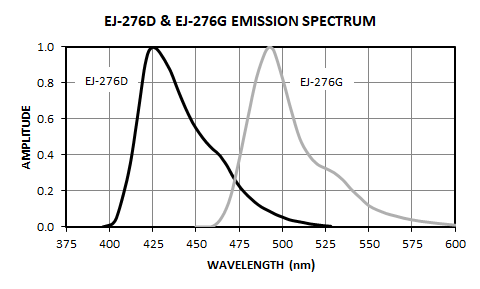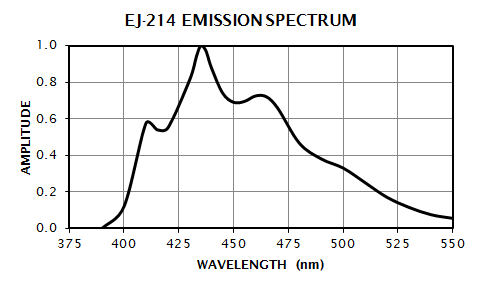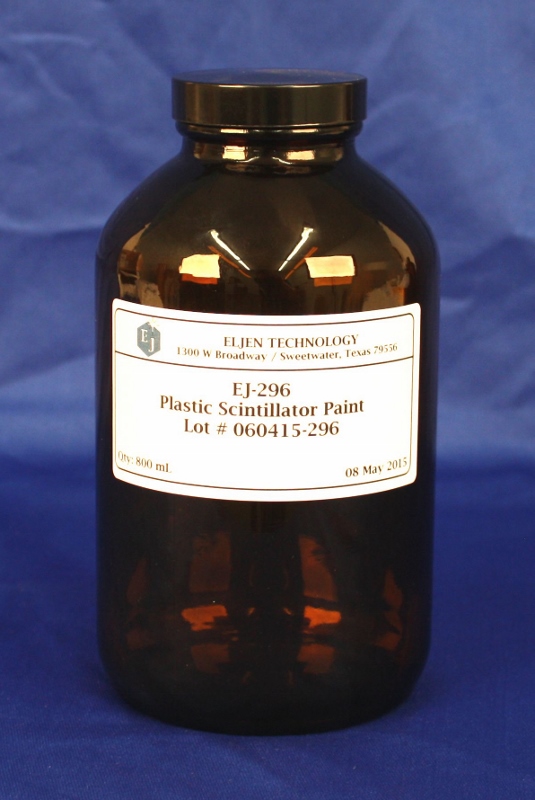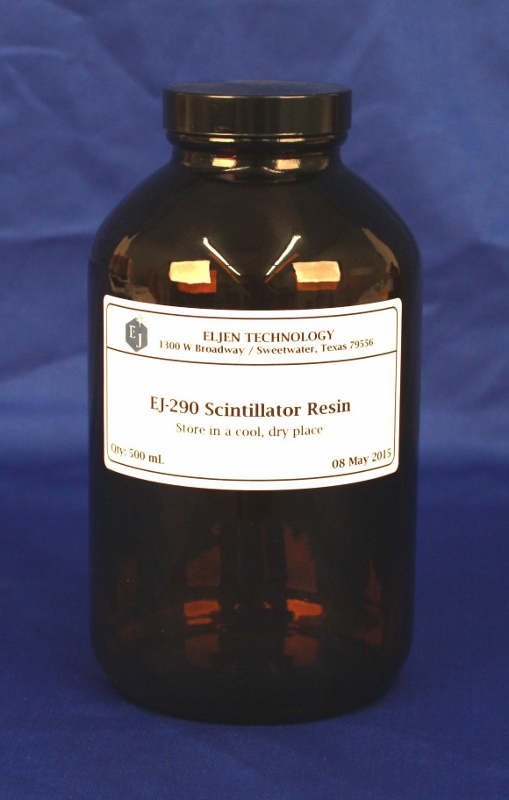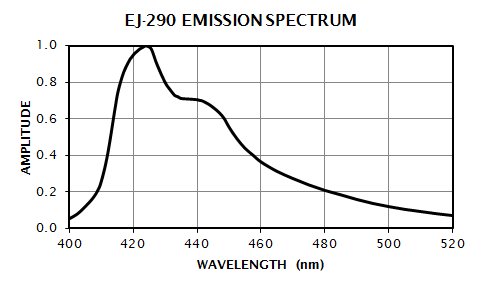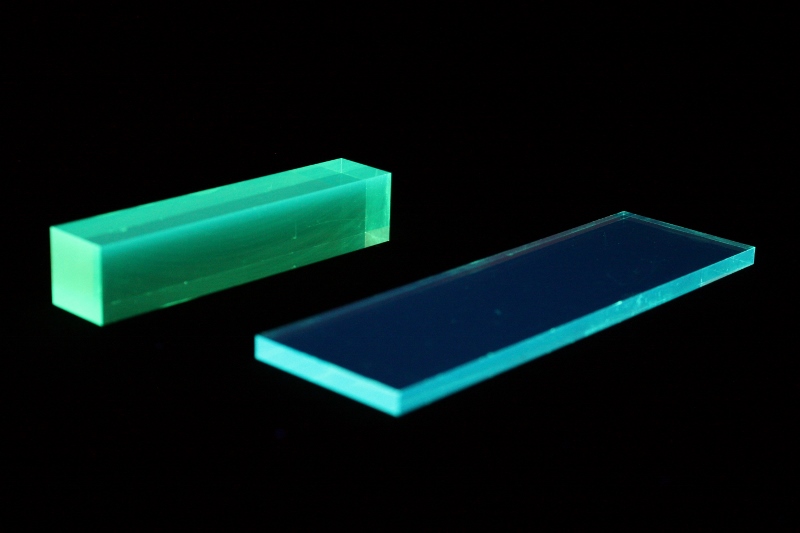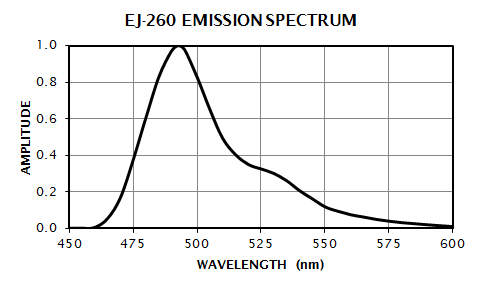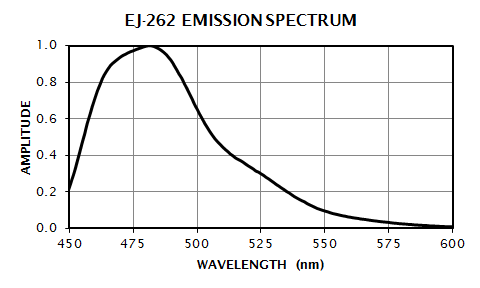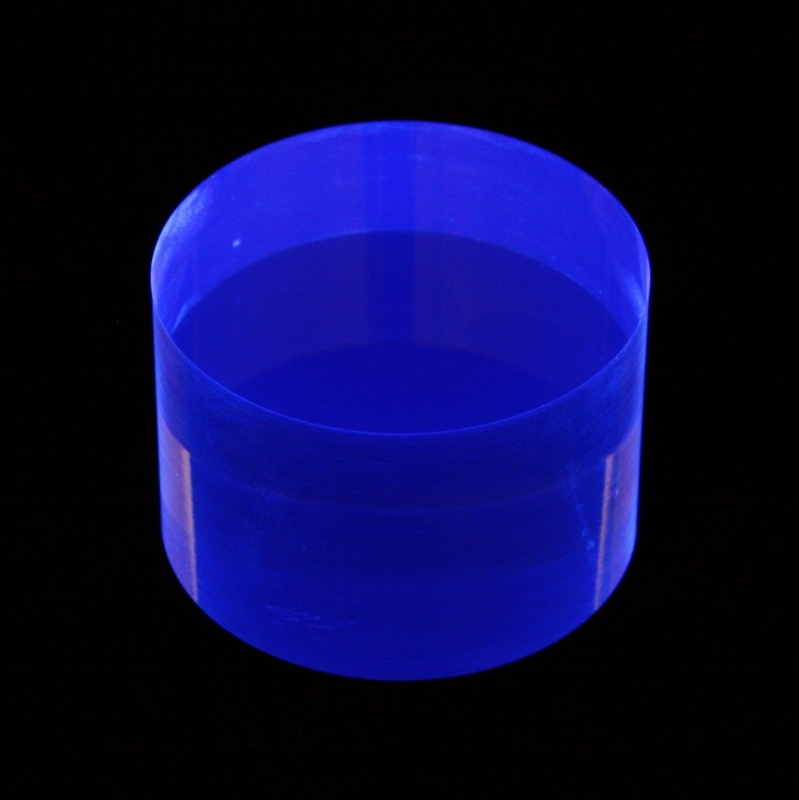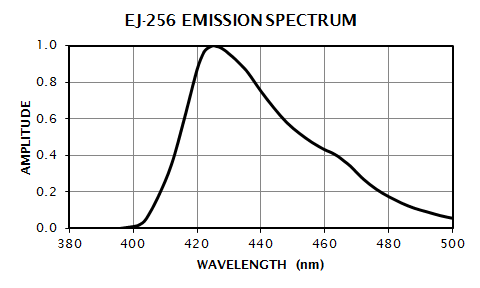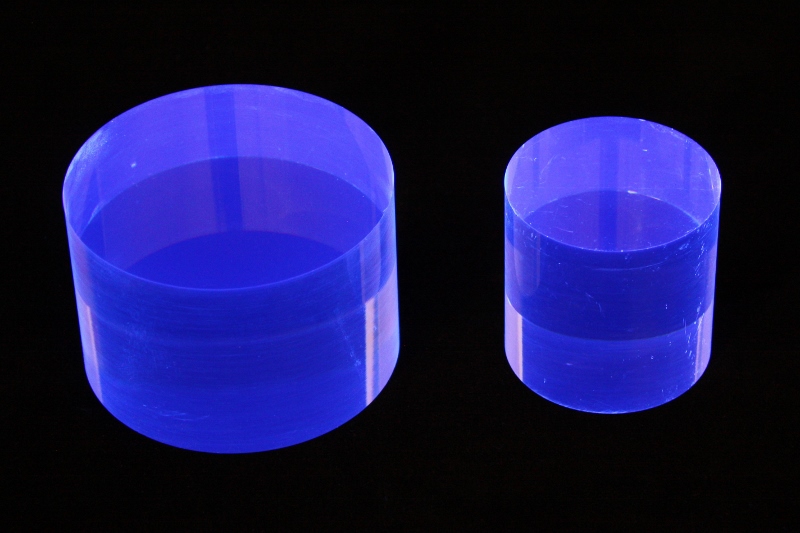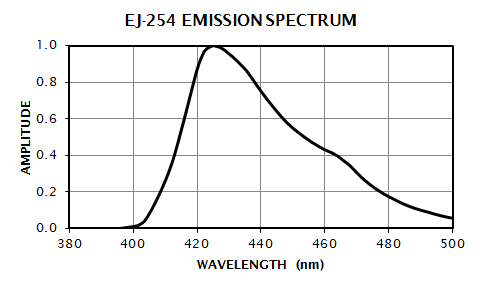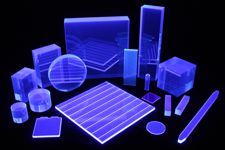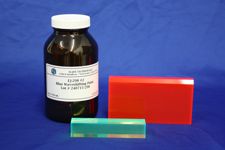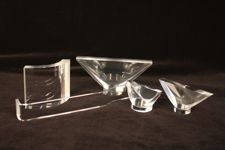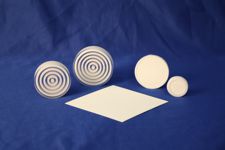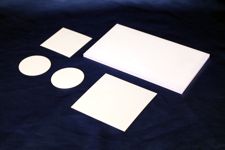PULSE SHAPE DISCRIMINATION
EJ-276D & EJ-276G
(Formerly EJ-299-33A, EJ-299-34)
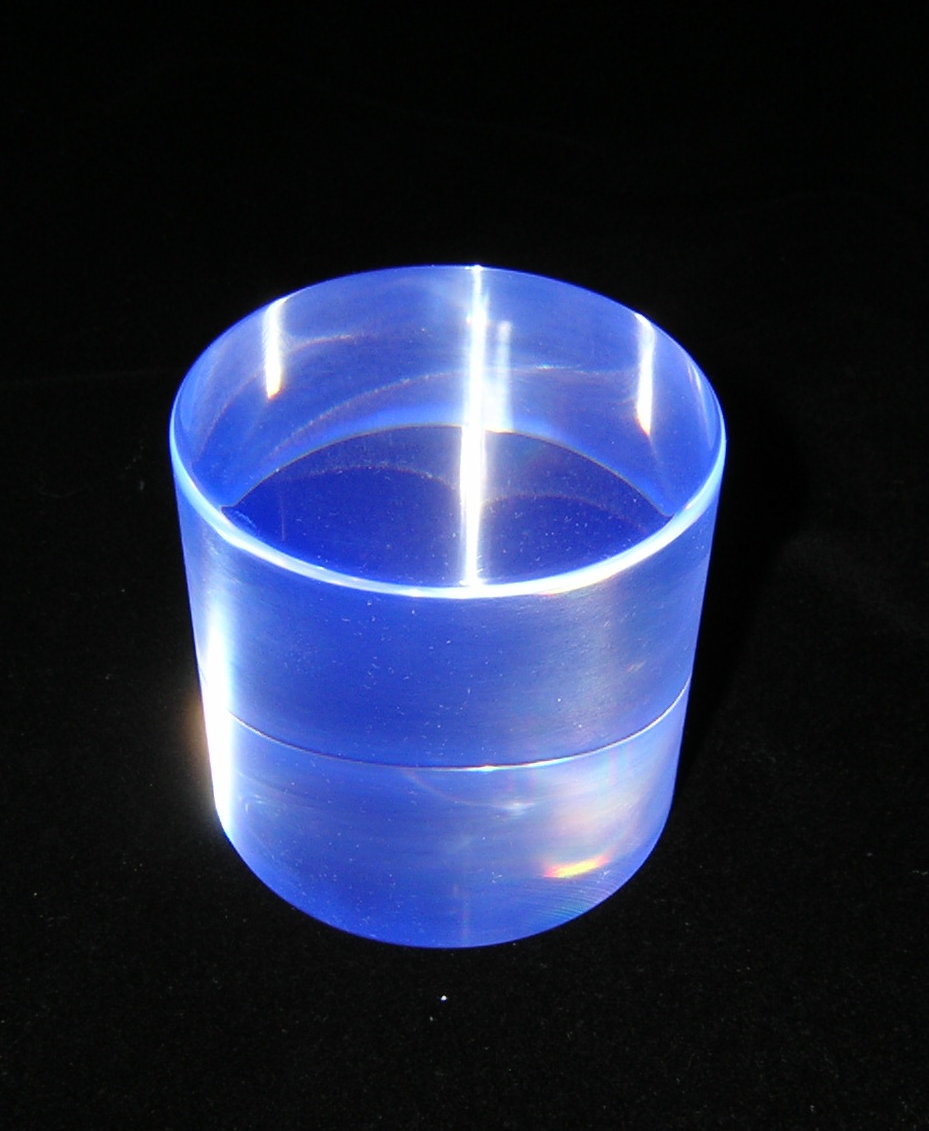
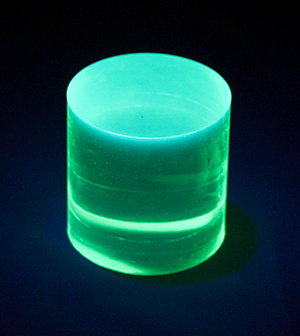
EJ-276D pulse-shape discriminating (PSD) plastic scintillator enables the separation of gamma and fast neutron signals on the basis of their timing characteristics. This scintillator replaces all versions of EJ-276, EJ-299-33, and EJ-299-34 PSD scintillators and embodies the following improvements:
- Non-hygroscopic
- Excellent physical hardness, equal to or superior to that of standard plastic scintillators
- Long-term stability of scintillation and optical characteristics
- Basic PSD properties increased to being comparable to the best liquid scintillators
EJ-276G with green fluorescence is also available for use with solid-state sensors.
| PROPERTIES | EJ-276D |
EJ-276G | |
| Light Output (% Anthracene) | 56 | 52 | |
| Scintillation Efficiency (photons/1 MeV e-) | 8,600 | 8,000 | |
| Wavelength of Maximum Emission (nm) | 425 | 490 | |
| No. of H Atoms per cm3 (x1022) | 4.647 | 4.647 | |
| No. of C Atoms per cm3 (x1022) | 4.944 | 4.944 | |
| No. of Electrons per cm3 (x1023) | 3.545 | 3.545 | |
| Density (g/cm3) | 1.099 | 1.099 | |
| Approx. Mean Decay Times of First 3 Components (ns) | Gamma Excitation | 13, 35, 270 | — |
| Neutron Excitation | 13, 59, 460 | — | |
|
Chemical Compatibility
Attacked by: Aromatic solvents, Chlorinated solvents, Ketones, Solvent bonding cements, etc.
Stable in: Water, Dilute acids and alkalis, Lower alcohols, and Silicone greases.
It is safe to use most epoxies with these scintillators.
|
